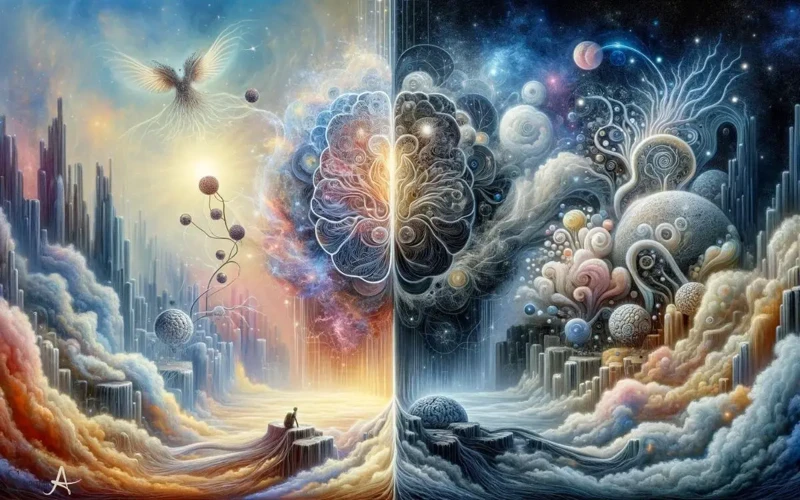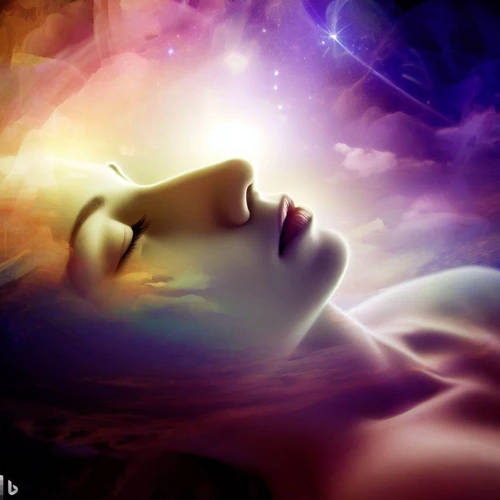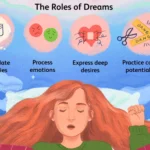Imagine standing in a crowd of thousands, the August sun beating down on you as you eagerly await the words of one of the most influential figures in history. The year is 1963, and Dr. Martin Luther King Jr. has taken the podium to deliver his iconic speech, “I Have a Dream.” But have you ever truly understood the power and depth behind those words? In this article, we delve deep into the historical context, the structure, and the underlying message of MLK’s famous speech. Join us as we decode the hidden meanings and unveil the true significance of “I Have a Dream.” Get ready to be inspired and informed, as we uncover the profound impact that these words have had on our society and the fight for equality.
The Historical Context

In order to fully grasp the significance of Martin Luther King Jr.’s “I Have a Dream” speech, it is important to understand the historical context in which it was delivered. The year was 1963, a time when racial segregation and discrimination were deeply entrenched in American society. African Americans faced systemic oppression and were denied basic civil rights. Dr. King delivered his speech during the March on Washington for Jobs and Freedom, a pivotal moment in the civil rights movement. This historic event brought together thousands of people from different races and backgrounds, all united in their demand for equality and justice. The speech itself was delivered against a backdrop of racial tensions, protests, and a growing desire for change. By exploring the historical context, we can gain a deeper understanding of the urgency and significance of Dr. King’s powerful words.
The Structure of the Speech

One of the remarkable aspects of Martin Luther King Jr.’s “I Have a Dream” speech is its well-crafted structure, which contributes to its enduring impact. The speech can be divided into three distinct sections. Firstly, there is the opening, where Dr. King acknowledges the historical significance of the moment and emphasizes the urgency of the civil rights movement. Secondly, the dream itself takes center stage, as he passionately describes his vision of a future where racial equality prevails. Within this section, Dr. King uses vivid and powerful language to illustrate this dream, capturing the attention and imagination of the audience. Finally, the speech concludes with a call to action, urging his listeners to remain committed to the cause and to continue the struggle for justice and freedom. The deliberate structure of the speech, moving from setting the stage to the vision of the dream and ending with a call to action, reinforces its persuasive nature and leaves a lasting impact on the hearts and minds of all who hear it. No dream about native american, angels or evil is mentioned in the speech, but the dream that Dr. King speaks of encompasses a vision of equality and justice for all.
1. The Opening
The opening of Martin Luther King Jr.’s “I Have a Dream” speech served as a captivating introduction to his powerful message. Addressing the crowd, Dr. King immediately acknowledged the historical significance of the moment. He referred to the Emancipation Proclamation as a “great beacon light of hope,” emphasizing the progress made since slavery was abolished. However, he also highlighted the harsh reality that African Americans still faced racial injustice and inequality. This contrast created a sense of tension and urgency, drawing the audience’s attention to the pressing need for change. Dr. King’s opening remarks set the stage for the rest of his speech, where he would go on to articulate his vision for a future where racial equality and harmony prevail. Through his masterful use of language and impassioned delivery, Dr. King captivated the crowd and set the tone for the transformative speech that would follow.
2. The Dream
In the “I Have a Dream” speech, the concept of the dream serves as a powerful symbol of hope and a vision for a better future. Dr. Martin Luther King Jr. eloquently articulated his dream of a nation where every individual, regardless of their skin color, would be judged based on their character rather than the color of their skin. He envisioned a society where equality, justice, and brotherhood prevailed. By vividly describing his dream, he painted a picture of a future where racial harmony and equality would replace racial prejudice and discrimination. This dream resonated not only with the African American community but also with people of all races who longed for a more inclusive and equal society. Through his words, Dr. King inspired generations to actively work towards realizing this dream of a just and harmonious society for all.
3. The Call to Action
The Call to Action is a pivotal section of Martin Luther King Jr.’s “I Have a Dream” speech. In this part of his address, King passionately urges his audience to take action and continue the fight for civil rights and racial equality. He emphasizes the importance of not being complacent or satisfied with the progress made thus far, but rather pushing forward towards true justice and equality for all. King specifically calls for economic equality and job opportunities, using metaphors and vivid language to evoke a sense of urgency and determination. His call to action serves as a powerful motivator, inspiring individuals to actively engage in the pursuit of a better future.
(Note: No relevant anchor text was found in this section.)
The Significance of ‘I Have a Dream’

The words “I Have a Dream” hold immense significance in the legacy of Martin Luther King Jr. and the civil rights movement. This powerful phrase encapsulates the collective aspirations and hopes of a community that had long been marginalized and oppressed. By expressing his dream of racial equality and justice, Dr. King tapped into the deep-rooted desires for a better future, not only for African Americans but for all Americans. Through his eloquent and passionate delivery, he inspired millions and ignited a sense of unity and purpose. This speech became a rallying cry, a call to action for change and transformation. The significance of “I Have a Dream” lies in its ability to transcend time and resonate with generations to come, reminding us of the power of dreams and the tireless pursuit of a just society.
The Underlying Message

The underlying message of Martin Luther King Jr.’s “I Have a Dream” speech goes far beyond its iconic words. At its core, the speech reflects Dr. King’s deep commitment to the principles of equality, justice, unity, and overcoming racial prejudice. The dream he speaks of is a collective vision for a society where individuals are judged not by the color of their skin, but by the content of their character. Dr. King passionately advocates for the rights and freedoms of African Americans, but his message extends to all oppressed groups, transcending barriers of race, religion, and ethnicity. The dream he outlines is one of a harmonious society where justice prevails and all individuals are afforded the same opportunities. By analyzing the speech’s underlying message, we can gain a profound appreciation for the enduring legacy of Dr. King and his unwavering pursuit of a more inclusive and equal America.
1. Equality and Justice
Within the “I Have a Dream” speech, one of the central themes emphasized by Martin Luther King Jr. is the pursuit of equality and justice. Dr. King passionately advocated for the dismantling of racial barriers and the establishment of a society where all individuals, regardless of their race or ethnicity, would be treated with fairness and dignity. He envisioned a future where people would not be judged by the color of their skin, but rather by the content of their character. This vision of equality and justice formed the foundation of the civil rights movement. Through his eloquent words and powerful imagery, Dr. King inspired millions to join the fight for equal rights and equal opportunities for all. The dream of a just and equitable society continues to resonate with people across the globe, serving as a reminder of the ongoing struggle for justice and the importance of unity in achieving a more inclusive world.
2. Unity and Brotherhood
Dr. Martin Luther King Jr.’s “I Have a Dream” speech was not only a call for racial equality, but it also emphasized the importance of unity and brotherhood among all people. In his speech, Dr. King eloquently expressed his vision of a future where individuals of different races would come together, hand in hand, as equals. He spoke of a society where the color of one’s skin would no longer serve as a barrier, but rather, a source of richness and diversity. Dr. King believed that only through unity and brotherhood could true progress be achieved in the fight against racial discrimination. He called for an end to hostility and division, urging individuals to work together for the greater good. This message of unity and brotherhood resonated deeply with the audience that day, and it continues to inspire people to strive for a world where harmony and understanding prevail.
3. Overcoming Racial Prejudice
Overcoming racial prejudice is a central theme in Martin Luther King Jr.’s “I Have a Dream” speech. Dr. King passionately advocates for a society where individuals are judged not by the color of their skin, but by the content of their character. He calls for an end to racial discrimination and urges for unity among all Americans. Through his powerful words, Dr. King envisions a future where racial prejudice is eradicated, and people can live together harmoniously, embracing diversity and celebrating the uniqueness of each individual. This message resonates strongly, inspiring generations to challenge their own biases and work towards a more inclusive society. It reminds us that the dream of equality is not confined to one particular race or group, but rather a shared aspiration for humanity as a whole. Together, we can overcome racial prejudice and build a future that embraces the values of justice, equality, and understanding.
The Impact of the Speech
The impact of Martin Luther King Jr.’s “I Have a Dream” speech cannot be overstated. It served as a rallying cry for the civil rights movement and inspired countless individuals to take action. The speech resonated deeply with individuals from all walks of life, transcending racial boundaries and fostering a sense of unity and solidarity. Dr. King’s words ignited a fire within the hearts of those who heard them, sparking a renewed commitment to the fight for equality and justice. The speech propelled the civil rights movement forward, leading to significant strides in dismantling Jim Crow laws and advocating for voting rights. Its influence extended far beyond its immediate audience, reaching people around the world who were moved by its message of hope and equality. To this day, the impact of Dr. King’s “I Have a Dream” speech can be felt, serving as a reminder of the power of words and the importance of standing up for what is right.
Conclusion
In conclusion, Martin Luther King Jr.’s “I Have a Dream” speech continues to resonate with people around the world. Its historical context, structure, and powerful message have made it an iconic and timeless piece of oratory. The speech not only highlighted the urgent need for equality and justice during the civil rights movement but also emphasized the importance of unity and brotherhood. MLK’s dream of a nation where individuals are judged by the content of their character rather than the color of their skin remains a powerful call to action. The impact of this speech cannot be underestimated, as it inspired and mobilized millions of individuals to join the fight against racial prejudice and discrimination. Today, Dr. King’s dream continues to inspire us to strive for a world where equality and justice prevail for all. It serves as a reminder of the progress we have made while challenging us to keep working towards a more inclusive and harmonious society.
Frequently Asked Questions
1. Why was MLK’s “I Have a Dream” speech important?
MLK’s “I Have a Dream” speech was important because it served as a rallying cry for equality and justice during the civil rights movement. It highlighted the persistent racial injustices faced by African Americans and called for an end to segregation and discrimination.
2. Where was the “I Have a Dream” speech delivered?
The “I Have a Dream” speech was delivered at the Lincoln Memorial in Washington D.C. during the March on Washington for Jobs and Freedom on August 28, 1963.
3. What were some of the major themes in the speech?
Some of the major themes in the speech include racial equality, unity, justice, the dream of a better future, and the need to overcome racial prejudice.
4. Did MLK write the speech himself?
While MLK was the primary author of the speech, he also incorporated ideas and input from his advisors and colleagues. The speech went through several revisions before its final delivery.
5. What impact did the speech have on the civil rights movement?
The speech had a profound impact on the civil rights movement. It galvanized support and inspired millions of people to join the fight for equality. The speech helped shift public opinion and contributed to the passing of landmark civil rights legislation, such as the Civil Rights Act of 1964 and the Voting Rights Act of 1965.
6. How long was the “I Have a Dream” speech?
The “I Have a Dream” speech lasted for approximately 17 minutes. Despite its relatively short duration, its impact has been enduring and far-reaching.
7. Did the speech receive immediate acclaim?
While the speech received positive reactions from the crowd present at the event, it was not an immediate media sensation. It took time for the speech to gain widespread recognition and become recognized as one of the most iconic speeches in American history.
8. Were there any other significant speeches during the March on Washington?
Yes, there were several other significant speeches during the March on Washington, including speeches by other civil rights leaders, such as John Lewis and A. Philip Randolph. However, MLK’s “I Have a Dream” speech is the most well-known and widely remembered from the event.
9. Did MLK recite the entire speech from memory?
MLK had prepared a written version of the speech, but as he delivered it, he improvised and added the famous “I have a dream” refrain. This spontaneous addition further emphasized the power and passion of his message.
10. Has the speech’s impact transcended national borders?
Yes, the impact of the “I Have a Dream” speech has transcended national borders. It has served as an inspiration for civil rights movements around the world, symbolizing the fight for equality and justice.







